How To Get Rid Of Eye Bags: 16 Natural Remedies To Try
Getting rid of those unseemly bags is not the herculean task you thought it was!
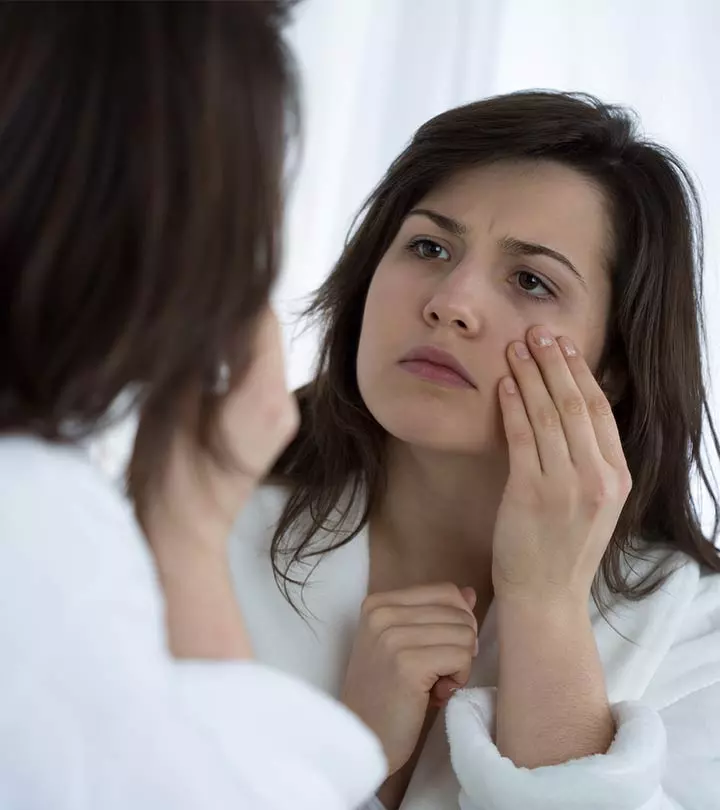
Image: ShutterStock
Bags under the eyes are not a pretty sight. They are the first thing on the face to capture a bystander’s unwanted attention. So, if you are wondering how to get rid of eyebags, this article can help you. But first, you need to understand why you get under-eye bags. They are a result of moderate swelling or puffiness that develops as you get older. The tissues surrounding your eyes, especially the muscles that support your eyelids, lose flexibility as you age. They frequently make you appear fatigued and sleepy. One of the most likely causes of under-eye bags is exhaustion. Other typical factors include stress and water retention. But worry not. Getting rid of puffy eyes can be a simple task that can be easily done at home. Keep reading to learn about some simple and natural cures for eye bags. Scroll down!
In This Article
Home Remedies For Eye Bags
- Tea Bags
- Essential Oils
- Witch Hazel
- Coconut Oil
- Coffee Grounds
- Cold Spoon
- Baking Soda
- Cucumber
- Egg White Mask
- Aloe Vera
- Petroleum Jelly
- Potato
- Salt Water Or Saline
- Strawberry Jam
- Lemon Juice
- Vitamin K
1. Reduce Puffy Eyes With Tea Bags
(a) Warm Tea Bags
Applying tea bags can help reduce bags under the eyes. It doesn’t matter whether the tea is green or black. The caffeine in it helps reduce the swelling that is usually caused as a result of fluid accumulation in the area (1).
You Will Need
- Teabags
- Warm water
What You Have To Do
- Soak two tea bags in warm water for around 5 minutes.
- Put the warm tea bags over your eyelids.
- Cover them with a soft cloth and leave them for about half an hour.
How Often You Need To Do This
Repeat the process a few times a day.
(b) Green Tea Bags
Green tea contains antioxidants that rejuvenate the skin around your eyes and help decrease swelling, redness, and puffiness of the retina. It contains tannins that help reduce inflammation. A 2012 study by Chatterjee et al. compared the anti-inflammatory effects of green tea and black tea extracts. The researchers tested how well the extracts, at various concentrations, could prevent egg albumin from denaturing, which is an indicator of inflammation. Both tea extracts showed a dose-dependent anti-inflammatory effect, with green tea being more effective than black tea. The stronger effect of green tea was likely due to its higher flavonoid content. These results suggest that green and black tea may help reduce inflammation, with green tea showing greater potential (2).
You Will Need
- Green tea bags
- Cold water
What You Have To Do
- Refrigerate the tea bags.
- Place the cold tea bags on your eyelids for 10-15 minutes.
How Often You Need To Do This
Repeat the process a few times in a day to see faster results.
Cherry, a blogger, likes to dip cotton pads in strongly brewed green tea and freeze them overnight to get rid of puffy eyes. She writes, “I don’t see a huge difference afterwards because my puffy eyes aren’t sleep-related but I still really like using them. I feel much more awake afterwards and it’s really refreshing (i).”
2. Essential Oils For Puffy Eyes
Lavender oil has a calming and soothing effect on the skin and nerves (3). Lemon oil aids in relieving stress and also contains natural antioxidants (4), ( 5). These can make the skin under the eyes healthier and toned. Chamomile possesses anti-inflammatory and anti-irritant properties (6). These properties may help relieve puffiness under the eyes. This essential oil mixture is also an effective home remedy for eye rashes.
You Will Need
- 1 drop lavender oil
- 1 drop lemon oil
- 1 drop chamomile oil
- 1 teaspoon water
What You Have To Do
- Mix the essential oils and blend them well in the water.
- Gently massage this oil under your eyes before going to bed. Leave it on overnight.
How Often You Need To Do This
Repeat this every night.
Caution: Be careful while massaging as the essential oils can irritate your eye if they come in contact with it.
3. Witch Hazel
Witch hazel is a natural astringent, and it also has a tightening effect on the skin (7). You can easily get rid of swollen eyes with this remedy.
You Will Need
- 2-3 tablespoons witch hazel
- Cotton pads
What You Have To Do
- Soak cotton pads in cold witch hazel for a minute.
- Wring out the excess and place the pads on your eyes for 10 to 15 minutes.
How Often You Need To Do This
Repeat this 2-3 times a day.
4. Coconut Oil
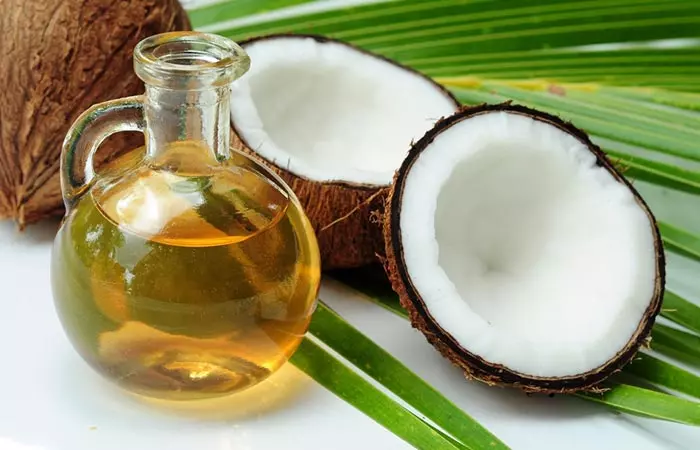
Lauric acid and other components of coconut oil possess anti-inflammatory properties (8). It also provides essential nutrients to the skin and moisturizes it (9). Regular application of coconut oil may help minimize eye bags. It is also a good sunken eye remedy.
You Will Need
Extra virgin coconut oil
What You Have To Do
- Massage the oil around your eyes with clean fingers in a clockwise and anti-clockwise motion for a few minutes.
- Leave it on overnight.
How Often You Need To Do This
Do this every night before going to bed.
5. Coffee Grounds For Puffy Eyes
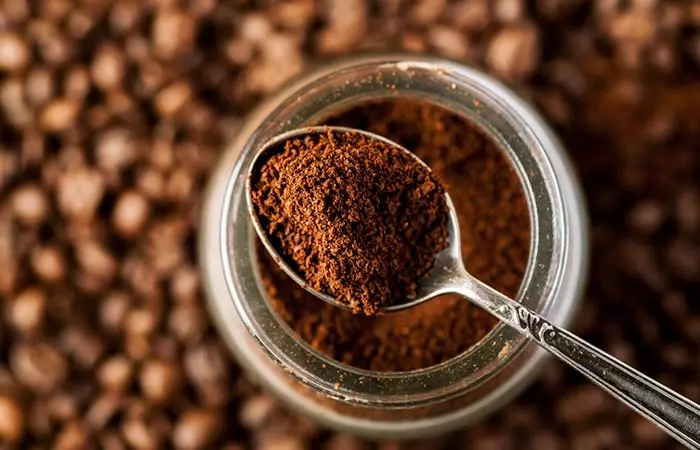
The caffeine in the coffee has anti-inflammatory effects and can reduce swelling and puffiness (1). Black pepper has antioxidant properties (10). These properties can help protect your skin from free radical damage and make the skin cells present in the under-eye area healthier. Make sure you avoid direct contact with the eyes. Coconut oil moisturizes the skin and gives it a natural glow.
You Will Need
- 1/2 teaspoon ground coffee beans
- A pinch of black pepper powder
- 1 teaspoon coconut oil
- Cotton or face wipe
What You Have To Do
- Mix the ingredients and apply the mixture under your eyes carefully. Do not get any of it in your eyes.
- Leave it on for 10 to 12 minutes.
- Wipe away gently with a wet cotton or a face wipe.
How Often You Need To Do This
You can do this a few times a week.
6. Cold Spoon

If you are wondering how to get rid of eye bags in minutes, a cold spoon might help. Cold steel teaspoons help to relax the blood vessels and reduce swelling (11). This can help in reducing the puffiness in the under-eye area.
You Will Need
4-5 steel teaspoons
What You Have To Do
- Place the teaspoons in the refrigerator for half an hour.
- Place the spoon on your eyes with the curved side facing downwards. Hold this position for about 15 to 20 minutes.
When You Need To Do This
Use this cold compress method 2 times a day.
7. Baking Soda
Baking soda
promotes blood flow and reduces eye bags. Its grainy texture acts as a natural exfoliant that sloughs off the dead skin cells from the under-eye.
Caution: If you have sensitive skin, do a patch test before proceeding with this remedy.
You Will Need
- 1 teaspoon baking soda
- 1 cup hot water
- Cotton pads
What You Have To Do
- Mix the baking soda well in water and soak the cotton pads in it.
- Remove the excess water and place the pads on your eyes. Leave them on for 10-15 minutes.
- Remove the pads and rinse your face with cold water.
- Pat dry and moisturize.
How Often You Need To Do This
Repeat this 1-2 times a day.
8. Cucumber

Chilled cucumbers are one of the best home remedies to get rid of eye bags. Cucumbers reduce irritation, while the cooling effect reduces swelling (12). This remedy not only helps treat eye bags but also helps get rid of wrinkles and dark circles under the eyes.
You Will Need
Cucumber slices
What You Have To Do
- Place the slices in the refrigerator for 10 to 15 minutes.
- Remove them from the refrigerator and place the cold slices over your eyelids.
- Leave them on for 10 to 15 minutes.
How Often You Need To Do This
Repeat it several times a day.
9. Egg White Mask For Puffy Eyes
Egg white stiffens when applied to skin. This helps in skin tightening and banishing under-eye bags and wrinkles. However, there is insufficient research to prove the effect of egg white on puffy eyes.
You Will Need
- 1 egg white
- A soft brush or a cloth
What You Have To Do
- Whip the egg white in a bowl thoroughly until it becomes stiff.
- Using a soft brush or a cloth, apply the egg white under your eyes and let it dry for some time.
- Wash it off using lukewarm water after 15 minutes.
How Often You Need To Do This
Once a day.
10. Aloe Vera For Puffy Eyes
Aloe vera contains essential vitamins and antioxidants (13). It not only reduces puffiness under the eyes but also tones the skin and has anti-aging effects.
You Will Need
Fresh aloe vera gel
What You Have To Do
- Apply the gel under your eyes and let it dry for 8-10 minutes.
- Rinse with cool water.
How Often You Need To Do This
Do this 2 times a day.
11. Petroleum Jelly
Petroleum jelly repairs, heals, and moisturizes the skin (14). It can also reduce inflammation, irritation, and soreness. However, there are insufficient scientific studies to prove the effect of petroleum jelly in reducing under-eye bags.
You Will Need
Petroleum jelly
What You Have To Do
Massage petroleum jelly under and around your eyes for a few minutes before going to bed.
How Often You Need To Do This
Do this every night.
12. Potato

This is a popular remedy for under-eye bags and dark circles. Potatoes contain enzymes and vitamin C that nourish the skin and make it younger-looking (15). They can also help relieve tiredness.
You Will Need
- 1 potato
- A soft cloth
What You Have To Do
- Peel a medium-sized potato and grate it.
- Collect the shavings in a cotton cloth and tie it up.
- Place this cloth over your eyes for 10 to 15 minutes.
How Often You Need To Do This
Use this remedy 2-3 times a day.
13. Salt Water Or Saline
Saltwater reduces inflammation (16). However, stay away from food containing a high concentration of salt, as salt-intense foods can cause puffy eyes.
You Will Need
- 1-quart warm water
- 1/2 teaspoon salt
- Eye pads or cotton balls
What You Have To Do
- Mix the salt with the warm water in a bowl.
- Soak eye pads (or you can even use cotton balls) in this warm saline water and place them over your eyelids. Keep them on for some time.
- Make sure that the cloth is a clean one. Otherwise, it will do more harm than good.
How Often You Need To Do This
Follow this procedure every night before sleeping.
 Quick Tip
Quick Tip14. Strawberry Jam
Strawberries contain polysaccharides that possess anti-inflammatory properties (17). Daily application of strawberries can help you get rid of puffy eyes.
You Will Need
Organic strawberry jam
What You Have To Do
- Apply the jam carefully under your eyes and leave it on for 10 to 12 minutes.
- Rinse with cool water.
How Often You Need To Do This
Repeat this once every day.
15. Lemon Juice
The vitamin C in the lemon juice removes toxins from your tired and puffy eyes. Lemon also possesses anti-inflammatory properties (18). This remedy can also help you get rid of dark circles under your eyes as lemon juice contains acids that have skin-lightening properties (19). Animal studies showed that cow milk has significant beneficial effects on the skin. It decreased inflammation and increased collagen production in the affected area (20).
You Will Need
- 1 teaspoon lemon juice
- 1 tablespoon full-fat milk or cream
- Cotton ball
What You Have To Do
- Mix the lemon juice with milk or cream.
- Soak the cotton ball in this mixture and apply it gently under the eyes.
- Let it air dry. Rinse with cool water.
How Often You Need To Do This
Do this 2 times a day.
16. Vitamin K For Puffy Eyes
The deficiency of vitamin K in the body can cause your eyes to swell up and form eye bags. It is essential to have a healthy diet that includes vitamin K-rich foods, such as green leafy vegetables, broccoli, sprouts, carrots, strawberries, and liver. Vitamin K has wound-healing activities and promotes the formation of collagen (21). This can help in making the skin under your eyes firmer and smoother.
Dr. Ranjodh S Boparai, MD, Ophthalmic Surgeon at the U.S. Department of Veterans Affairs, says, “If the eyebags are from fluid buildup, then doing a cold compress can help relieve the eyebags.”
The above-listed are wonderful home remedies to treat puffy eyes. But apart from these, hyaluronic acid, retinol, vitamin E, rose water, chamomile, potato slices, almond oil, and more could also be very effective in treating puffy eyes and reducing dark circles (22) (23).
If you are thinking about how to remove eye bags permanently at home, along with these remedies, make sure to follow healthy lifestyle practices such as eating a balanced meal, working out daily, and keeping yourself hydrated. Apart from that, you can also try yoga for puffy eyes and eye bags. Yoga relieves stress and regularizes your body functions, improving the look and health of your eyes. Below, we have discussed some medical eye treatment options for under-eye bags.
Key Takeaways
- Stress, age, exhaustion, and dehydration are the common causes of eye bags.
- Tea bags and cucumbers may reduce swelling and promote skin hydration.
- Aloe vera gel may reduce puffiness and has anti-aging properties when applied under the eyes.
- Lemon has anti-inflammatory and skin-lightening properties, and when combined with milk, may improve skin health, reduce swelling, and boost collagen production.
Medical Treatment For Bags Under Eyes
1. Eyelid Surgery (Blepharoplasty)
Blepharoplasty surgery may involve removing excess muscle, fat, or skin to fix droopy eyelids (22). Stretched or saggy eyelids can weaken the muscles supporting them. As a result, excess fat gets accumulated above or below the eyelids. This surgery targets these fats to remove the bags.
2. Microneedling
Microneedling is a minimally invasive procedure that is performed by dermatologists to treat different skin conditions. The process involves the insertion of fine needles into the skin, which rebuilds the dermis. It helps improve the production of collagen and firms saggy and stretchy skin.
3. Fillers
Filler injections are a popular cosmetic non-surgical procedure for managing under-eye puffiness and dark circles (24). They are made of hyaluronic acid, which plumps the hollowed areas, providing a smoother and more youthful look. They give immediate results with minimal downtime and are a quick and convenient option for rejuvenating the under-eye area.
4. Medications
Consult your doctor about over-the-counter medications. If the puffiness is caused by an allergy, anti-allergy medicines can help.
5. Retinol
Retinol is a vitamin A derivative, renowned for its skin-renewing properties, especially for treating eye bags. It promotes collagen production, making the skin around the eyes firmer and more elastic, reducing the appearance of puffiness (25). Regular use of retinol-based creams or serums may help diminish eye bags, resulting in a rejuvenated and refreshed look.
6. Eye Massager
An eye massager is designed to alleviate puffiness and dark circles around the eyes. It stimulates blood circulation, reduces swelling, and promotes relaxation using gentle vibrations and heat therapy, which also enhances the overall appearance of the eyes.
These remedies help get rid of eye bags and give you back a youthful look. However, if eye bags are your everyday concern, understanding the cause behind them may help you deal with them better. Learn the common causes of eye bags in the section below. Read on.
Causes Of Eye Bags
Here are a few reasons for the appearance of eye bags:
- Aging is a natural process that significantly affects our skin. As we grow older, there is a shift of fat under the eyes, which can result in puffiness and a tired appearance (26).
- Genetics also plays a critical role in the likelihood of developing eye bags. If your family has a history of under-eye puffiness, you might be more prone to it yourself (27).
- Allergies are another common culprit for eye bags. When you have an allergic reaction, your body can become inflamed, leading to swelling around the eyes (28). This inflammation can make the area look puffy and irritated.
- Fluid retention can often be attributed to dietary choices and hormonal fluctuations. Consuming too much salt can cause your body to hold onto water, leading to puffiness around the eyes (29).
- Lack of sleep is well-known for contributing to dark circles and puffiness under the eyes. When you do not get enough rest, your body can react by retaining fluid, which can cause the appearance of bags (27).
- Dehydration can also affect the skin under your eyes (30). When you are not drinking enough water, your skin can become dull and more prone to showing signs of aging, including bags under the eyes.
- Smoking is not good for skin health and may significantly worsen the appearance of eye bags. Tobacco smoke contains harmful chemicals that can weaken the skin, leading to a loss of firmness and an increased likelihood of puffiness (31).
- Finally, sun exposure can have a damaging effect on the skin around the eyes (32). UV rays can accelerate the aging process, causing skin to lose its elasticity and develop puffiness. Protecting your skin from the sun is essential in preventing premature aging and maintaining a youthful appearance.
You will notice that some of these causes are human-made and because of poor lifestyle choices. Hence, they are easy to address, and you can easily prevent eye bags. So, check out the section below for some lifestyle changes that you can make to manage or prevent the formation of bags under the eyes.
Prevention Tips
Follow these tips to minimize the likelihood of getting baggy eyes:
- Reduce salt in your diet.
- Get enough sleep.
- Remove makeup before going to bed.
- Exercise regularly.
- Do not consume alcohol regularly.
- Exfoliate your skin regularly.
 Quick Tip
Quick TipInfographic: Medical Treatments For Eye Bags
Exhaustion, water retention, and stress are the main factors responsible for undereye bags. Despite it being one of the most common skin issues faced by many people, you can get rid of eye bags with easy and effective home remedies. However, some people may not get the desired results with these remedies. In that case, you can opt for medical treatments, certain eye creams to improve the appearance of your eyes.
Check out the infographic below to learn about the non-surgical medical treatments for eye bags.
Some thing wrong with infographic shortcode. please verify shortcode syntax
Stress, fatigue, aging, and water retention can make your eyes look puffy and swollen, a phenomenon commonly described as eye bags. Using tea bags over the eyes is an effective way to reduce puffiness as caffeine lowers water retention. Other home remedies to get rid of eye bags include the use of cucumber, coconut oil, aloe vera, potato, coffee grounds, egg whites, strawberry jam, and cold spoons. However, if the remedies discussed here do not help and your condition persists, you may need to contact a doctor to understand the underlying cause behind your eyebags.
Frequently Asked Questions
Do eyebags go away with sleep?
Dr. Boparai says, “If the cause of eyebags is lack of sleep, then yes, the bags will improve with better sleep hygiene.”
How much sleep do I need to get rid of bags?
According to Dr. Boparai, “The optimal sleep time is different for everyone. Typically, getting between 7-8 hours of sleep is sufficient for most people.”
What kind of tea bag is good for puffy eyes?
You can use a regular tea bag or a green tea bag to get rid of puffy eyes. Both work well in reducing puffiness and baggy skin.
What causes a puffy eye?
We all have fat in our body that is held in place by muscles and ligaments. But, as we get older, the muscles start weakening, and everything starts to sag, making the fats more visible. This happens to our faces as well. The collagen levels decline with age, causing the skin to lose its elasticity and sag. One of the major reasons people get eye bags is that they are hereditary. Some of the most common causes of puffy eyes are listed below:
• Lack of sleep and fatigue
• Stress
• Aging
• Salty food
• Lack of exercise
• Dermatitis
• Sinus infections
• Fluid (water) retention
Why are my eyes so puffy in the morning?
We do not realize this, but blinking is an essential exercise for the muscles around our eyes. While we sleep, we do not blink, and this can result in fluid retention in the under-eye area. This causes swelling or edema. This puffiness in your eyes usually goes away once you open your eyes and start blinking. Also, as per Dr. Boparai, “Eyebags could be caused by many reasons, including poor sleep, aging, alcohol consumption, nicotine, allergies, and dry eyes.”
How to get rid of puffy eyes from crying?
We have listed many home remedies that you can use to get rid of puffy eyes. If crying is the reason for the puffiness, we recommend using cooling and soothing remedies that will also ease the burning sensation and irritation that has resulted from crying. Some of the remedies that you can use are tea bags, a cold spoon, cucumber slices, and aloe vera.
How long does it take to recover from eye bags?
The exact duration of recovery from eye bags is hard to determine and depends on several factors, including the individual’s health and skin type. However, if you have undergone surgery to remove your eye bags, recovery from the associated redness and swelling can take anywhere between 7 to 14 days.
Can thyroid issues cause bags under your eyes?
Yes, Graves’ disease is a thyroid condition that results in the excess production of thyroid hormones. These elevated hormone levels can lead to inflammation and swelling around the eyes (33).
Can low iron levels cause bags under your eyes?
No, there is no scientific evidence to suggest that low iron levels can cause bags under your eyes. However, low levels of iron may lead to dark circles under the eyes (34).
Does B12 deficiency cause bags under your eyes?
No, there are no studies indicating that a vitamin B12 deficiency causes under-eye bags. However, studies suggest that vitamin B12 deficiency may result in increased pigmentation under the eyes (34).
Get the best tips and tricks to reduce puffiness and dark circles. Check out this video to learn how to get rid of under-eye bags.
Personal Experience: Source
StyleCraze's articles are interwoven with authentic personal narratives that provide depth and resonance to our content. Below are the sources of the personal accounts referenced in this article.
i. DIY green tea eye compresshttps://hiiamcherry.wordpress.com/2015/01/23/diy-green-tea-eye-compress/
References
Articles on StyleCraze are backed by verified information from peer-reviewed and academic research papers, reputed organizations, research institutions, and medical associations to ensure accuracy and relevance. Read our editorial policy to learn more.
- Evaluation of Caffeine Gels on Physicochemical Characteristics and In Vivo Efficacy in Reducing Puffy Eyes, Journal of Applied Pharmaceutical Science, Semantic Scholar.
https://pdfs.semanticscholar.org/aa08/496ff554c081d06fda1bd681f60e602464aa.pdf?_ga=2.58399982.531740052.1582379982-22564082.1576381381 - Evaluation of anti-inflammatory effects of green tea and black tea: A comparative in vitro study, Journal of Advanced Pharmaceutical Technology & Research, US National Library of Medicine, National Institutes of Health.
https://www.ncbi.nlm.nih.gov/pmc/articles/PMC3401676/ - Lavender and the Nervous System, Evidence-based Complementary and Alternative Medicine, US National Library of Medicine, National Institutes of Health.
https://www.ncbi.nlm.nih.gov/pmc/articles/PMC3612440/ - Lemon oil vapor causes an anti-stress effect via modulating the 5-HT and DA activities in mice, Behavioural Brain Research, US National Library of Medicine, National Institutes of Health.
https://pubmed.ncbi.nlm.nih.gov/16780969/ - Biochemical studies on a novel antioxidant from lemon oil and its biotechnological application in cosmetic dermatology, Drugs Under Experimental and Clinical Research, US National Library of Medicine, National Institutes of Health.
https://pubmed.ncbi.nlm.nih.gov/10568210/ - Chamomile: A herbal medicine of the past with bright future, Molecular Medicine Reports, US National Library of Medicine, National Institutes of Health.
https://www.ncbi.nlm.nih.gov/pmc/articles/PMC2995283/ - Antioxidant and potential anti-inflammatory activity of extracts and formulations of white tea, rose, and witch hazel on primary human dermal fibroblast cells, Journal of Inflammation (London, England), US National Library of Medicine, National Institutes of Health.
https://www.ncbi.nlm.nih.gov/pmc/articles/PMC3214789/ - Anti-inflammatory, analgesic, and antipyretic activities of virgin coconut oil, Pharmaceutical Biology, US National Library of Medicine, National Institutes of Health.
https://pubmed.ncbi.nlm.nih.gov/20645831/ - A randomized double-blind controlled trial comparing extra virgin coconut oil with mineral oil as a moisturizer for mild to moderate xerosis, Dermatitis: Contact, Atopic, Occupational, Drug, US National Library of Medicine, National Institutes of Health.
https://pubmed.ncbi.nlm.nih.gov/15724344/ - Black Pepper and Health Claims: A Comprehensive Treatise, Critical Reviews in Food Science & Nutrition, US National Library of Medicine, National Institutes of Health.
https://pubmed.ncbi.nlm.nih.gov/23768180/ - Cold and compression in the management of musculoskeletal injuries and orthopedic operative procedures: a narrative review, Open Access Journal of Sports Medicine, US National Library of Medicine, National Institutes of Health.
https://www.ncbi.nlm.nih.gov/pmc/articles/PMC3781860/ - Phytochemical and therapeutic potential of cucumber, Fitoterapia, US National Library of Medicine, National Institutes of Health.
https://pubmed.ncbi.nlm.nih.gov/23098877/ - ALOE VERA: A SHORT REVIEW, Indian Journal of Dermatology, US National Library of Medicine, National Institutes of Health.
https://www.ncbi.nlm.nih.gov/pmc/articles/PMC2763764/ - Effects of Petrolatum on Stratum Corneum Structure and Function, Journal of the American Academy of Dermatology, US National Library of Medicine, National Institutes of Health.
https://pubmed.ncbi.nlm.nih.gov/1564142/ - Health Benefits and Cons of Solanum tuberosum, Journal of Medicinal Plants Studies, Phytojournal.
https://www.plantsjournal.com/vol1Issue1/Issue_jan_2013/3.pdf - Hypertonic Saline Solution Reduces the Inflammatory Response in Endotoxemic Rats, Clinics (Sao Paulo), US National Library of Medicine, National Institutes of Health.
https://pubmed.ncbi.nlm.nih.gov/2329560 - Anti-inflammatory and anti-apoptotic effects of strawberry and mulberry fruit polysaccharides on lipopolysaccharide-stimulated macrophages through modulating pro-/anti-inflammatory cytokines secretion and Bcl-2/Bak protein ratio, Food and Chemical Toxicology, US National Library of Medicine, National Institutes of Health.
https://pubmed.ncbi.nlm.nih.gov/22721979/ - Anti-inflammatory effect of lemon mucilage: in vivo and in vitro studies, Immunopharmacology and Immunotoxicology, US National Library of Medicine, National Institutes of Health.
https://pubmed.ncbi.nlm.nih.gov/16435583/ - Are Natural Ingredients Effective in the Management of Hyperpigmentation? A Systematic Review, The Journal of Clinical and Aesthetic Dermatology, US National Library of Medicine, National Institutes of Health.
https://www.ncbi.nlm.nih.gov/pmc/articles/PMC5843359/ - Wound Healing Property of Milk in Full Thickness Wound Model of Rabbit, International Journal of Surgery, US National Library of Medicine, National Institutes of Health.
https://pubmed.ncbi.nlm.nih.gov/29689312/ - “Wound healing effects of topical Vitamin K: A randomized controlled trial”
https://www.ncbi.nlm.nih.gov/pmc/articles/PMC6533928/ ,https://www.ncbi.nlm.nih.gov/pmc/articles/PMC6533928/ - Blepharoplasty: An Overview, Journal of Cutaneous and Aesthetic Surgery, US National Library of Medicine, National Institutes of Health.
https://www.ncbi.nlm.nih.gov/pmc/articles/PMC2840922/ - A data-driven approach for the discovery of biomarkers associated with thyroid eye disease
https://bmcophthalmol.biomedcentral.com/articles/10.1186/s12886-021-01903-9 - Filler-based correction of tear trough depressions and eye bags in Japanese patients: A classification system and treatment algorithm
https://pubmed.ncbi.nlm.nih.gov/36208029/ - Efficacy and Tolerability of a Retinoid Eye Cream for Fine to Moderate Wrinkles of the Periorbital Region
https://pubmed.ncbi.nlm.nih.gov/36074511/ - Global periorbital skin rejuvenation by a topical eye cream containing low molecular weight heparan sulfate (LMW‐HS) and a blend of naturally derived extracts
https://www.ncbi.nlm.nih.gov/pmc/articles/PMC6850077/ - Physiological and lifestyle factors contributing to risk and severity of peri-orbital dark circles in the Brazilian population
https://www.ncbi.nlm.nih.gov/pmc/articles/PMC4560538/ - Treatments of Infra-Orbital Dark Circles by Various Etiologies
https://www.ncbi.nlm.nih.gov/pmc/articles/PMC7992473/ - Infraorbital Dark Circles: A Review of the Pathogenesis, Evaluation and Treatment
https://www.ncbi.nlm.nih.gov/pmc/articles/PMC4924417/ - Identification Of Three Key Factors Contributing To The Aetiology Of Dark Circles By Clinical And Instrumental Assessments Of The Infraorbital Region
https://www.ncbi.nlm.nih.gov/pmc/articles/PMC6927230/ - Tobacco smoke causes premature skin aging
https://pubmed.ncbi.nlm.nih.gov/17951030/ - Towards standardization of UV eye protection: what can be learned from photodermatology?
https://pubmed.ncbi.nlm.nih.gov/24303877/ - A data-driven approach for the discovery of biomarkers associated with thyroid eye disease
https://bmcophthalmol.biomedcentral.com/articles/10.1186/s12886-021-01903-9 - Study of Causative Factors and Clinical Patterns of Periorbital Pigmentation
https://www.ncbi.nlm.nih.gov/pmc/articles/PMC6536080/
Read full bio of Dr. Millie Lytle
- Dr. Ranjodh S Boparai, MD, is an ophthalmic surgeon at the U.S. Department of Veterans Affairs. He has 5 years of experience and aims to spread awareness about the importance of eyecare. He has authored 50+ publications on biomedical research, received 20+ awards and scholarships, and granted 10+ research fellowships.
 Dr. Ranjodh S Boparai, MD, is an ophthalmic surgeon at the U.S. Department of Veterans Affairs. He has 5 years of experience and aims to spread awareness about the importance of eyecare. He has authored 50+ publications on biomedical research, received 20+ awards and scholarships, and granted 10+ research fellowships.
Dr. Ranjodh S Boparai, MD, is an ophthalmic surgeon at the U.S. Department of Veterans Affairs. He has 5 years of experience and aims to spread awareness about the importance of eyecare. He has authored 50+ publications on biomedical research, received 20+ awards and scholarships, and granted 10+ research fellowships.
Read full bio of Kushneet Kukreja
Read full bio of Ramona Sinha
Read full bio of Monomita Chakraborty









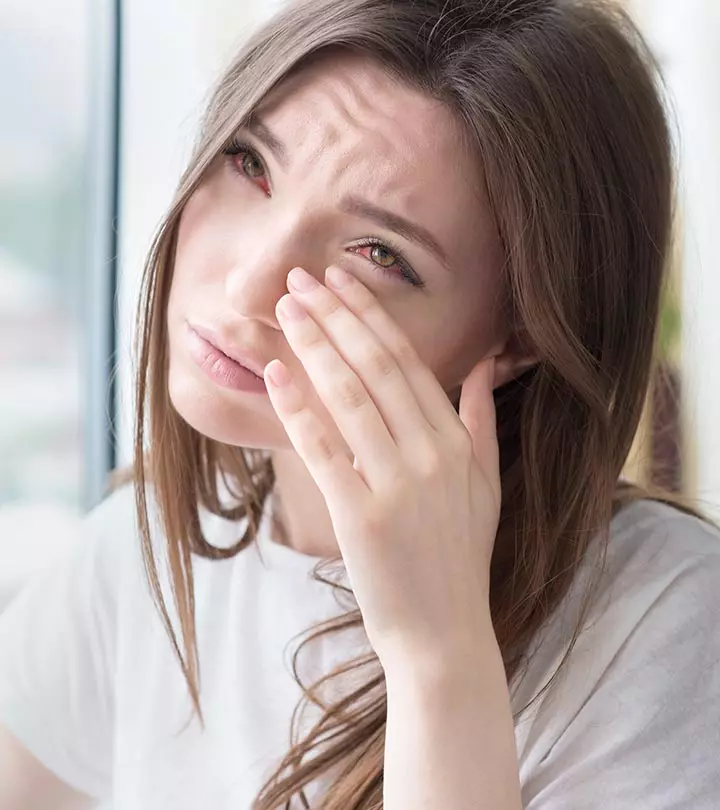


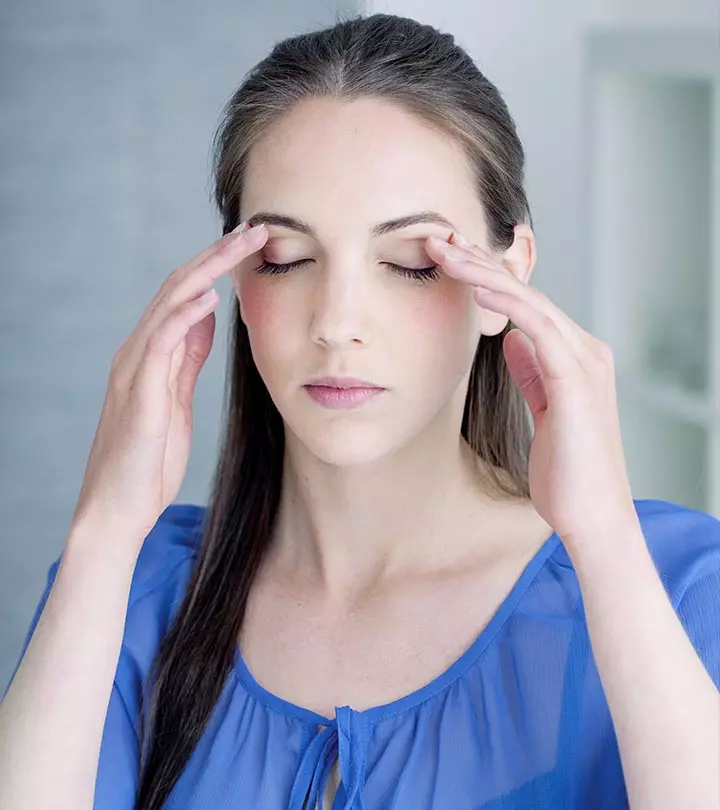

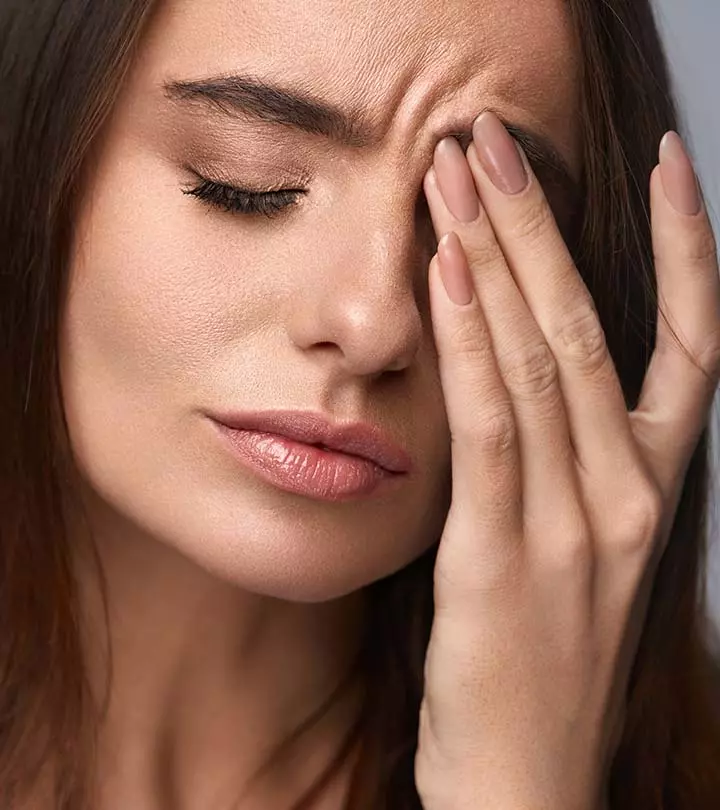
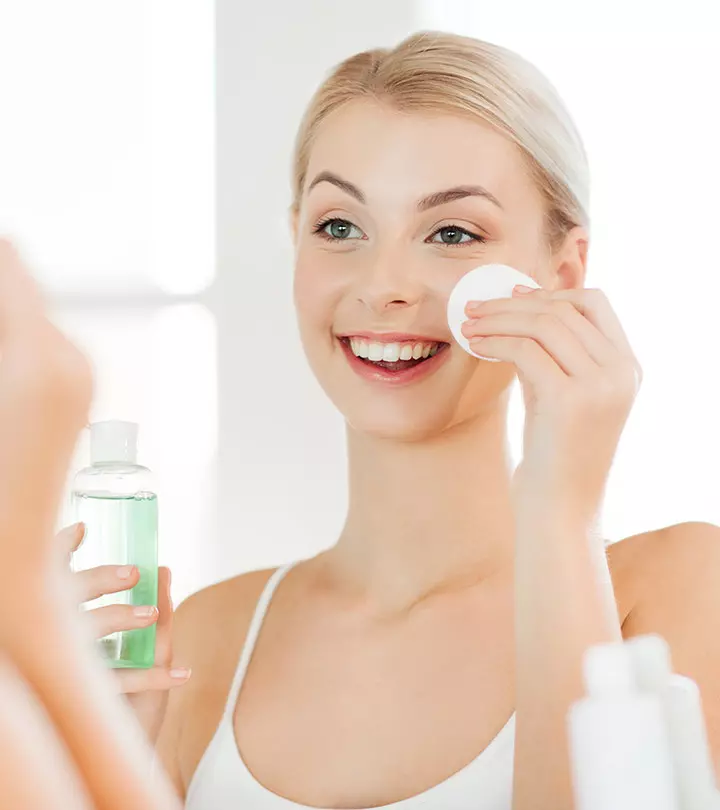

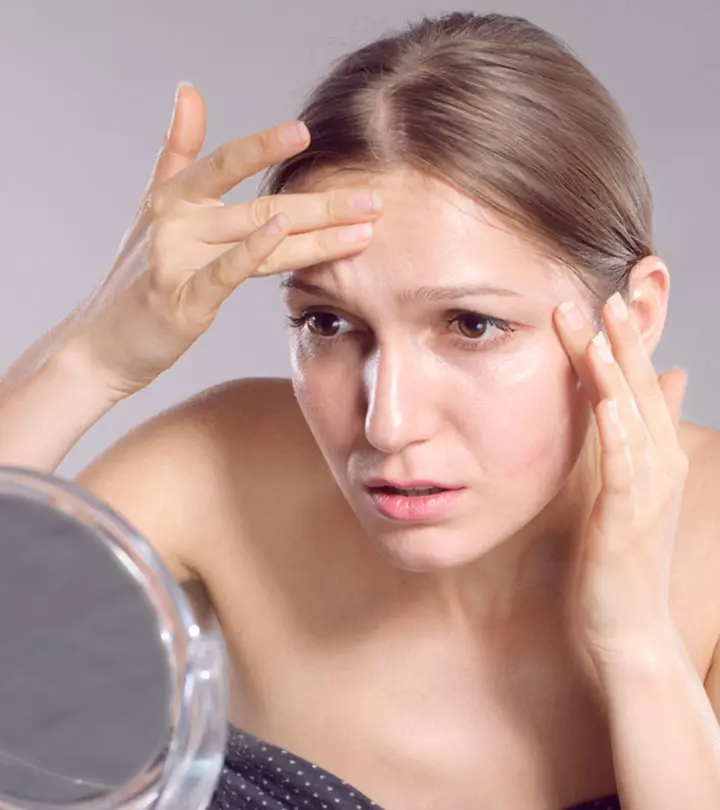
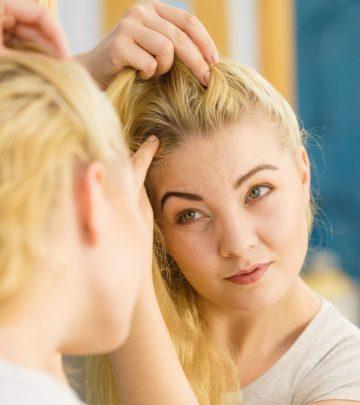
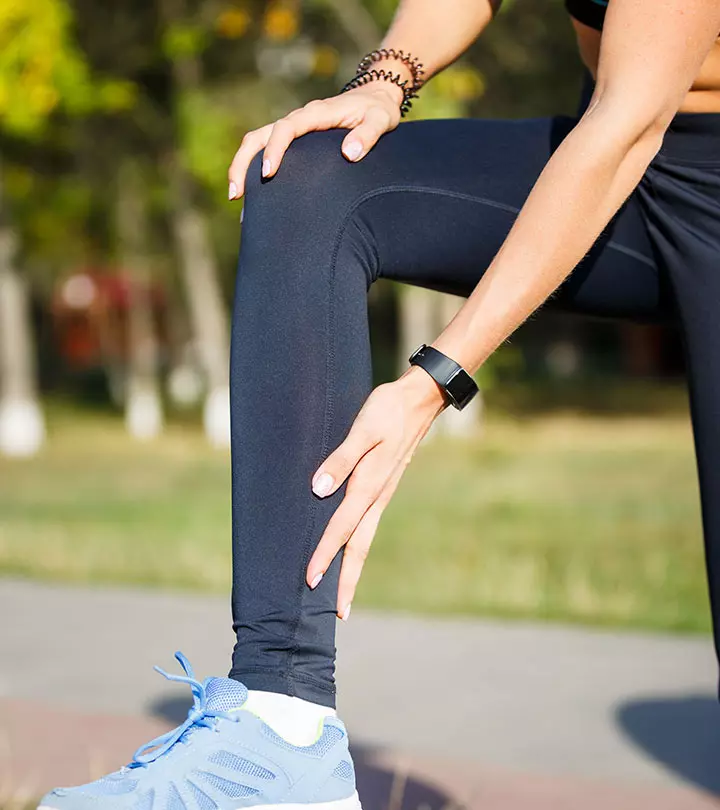


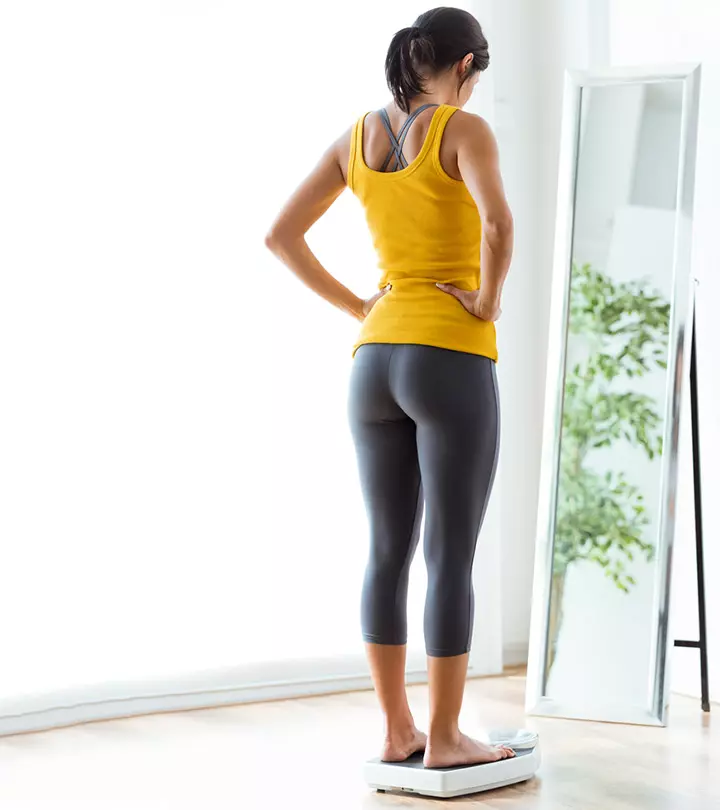
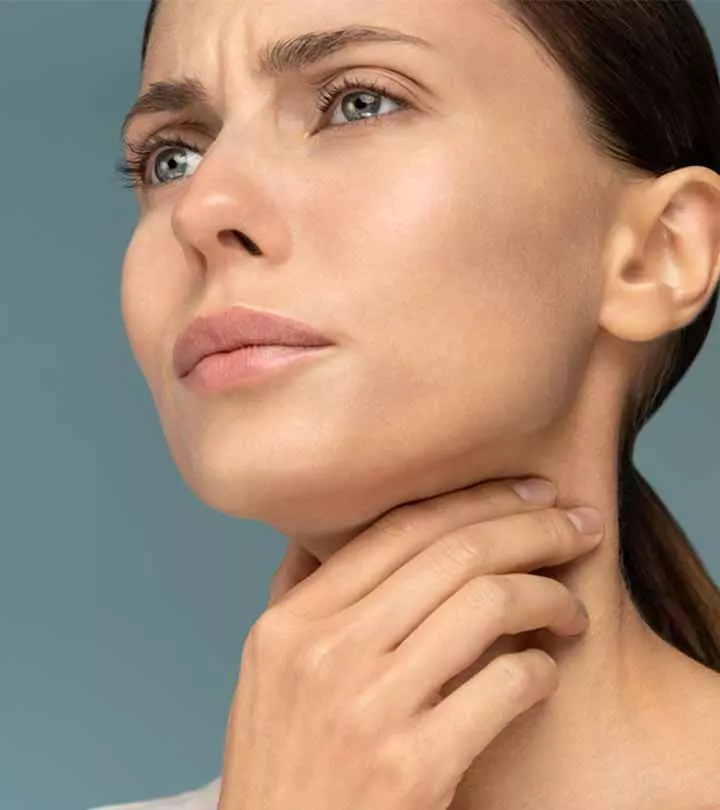
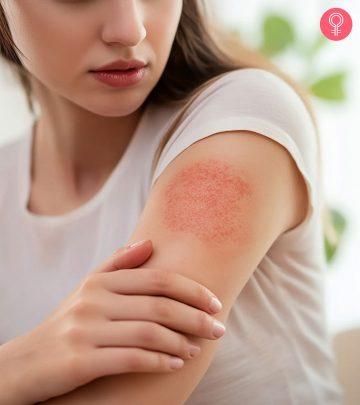


Community Experiences
Join the conversation and become a part of our empowering community! Share your stories, experiences, and insights to connect with other beauty, lifestyle, and health enthusiasts.